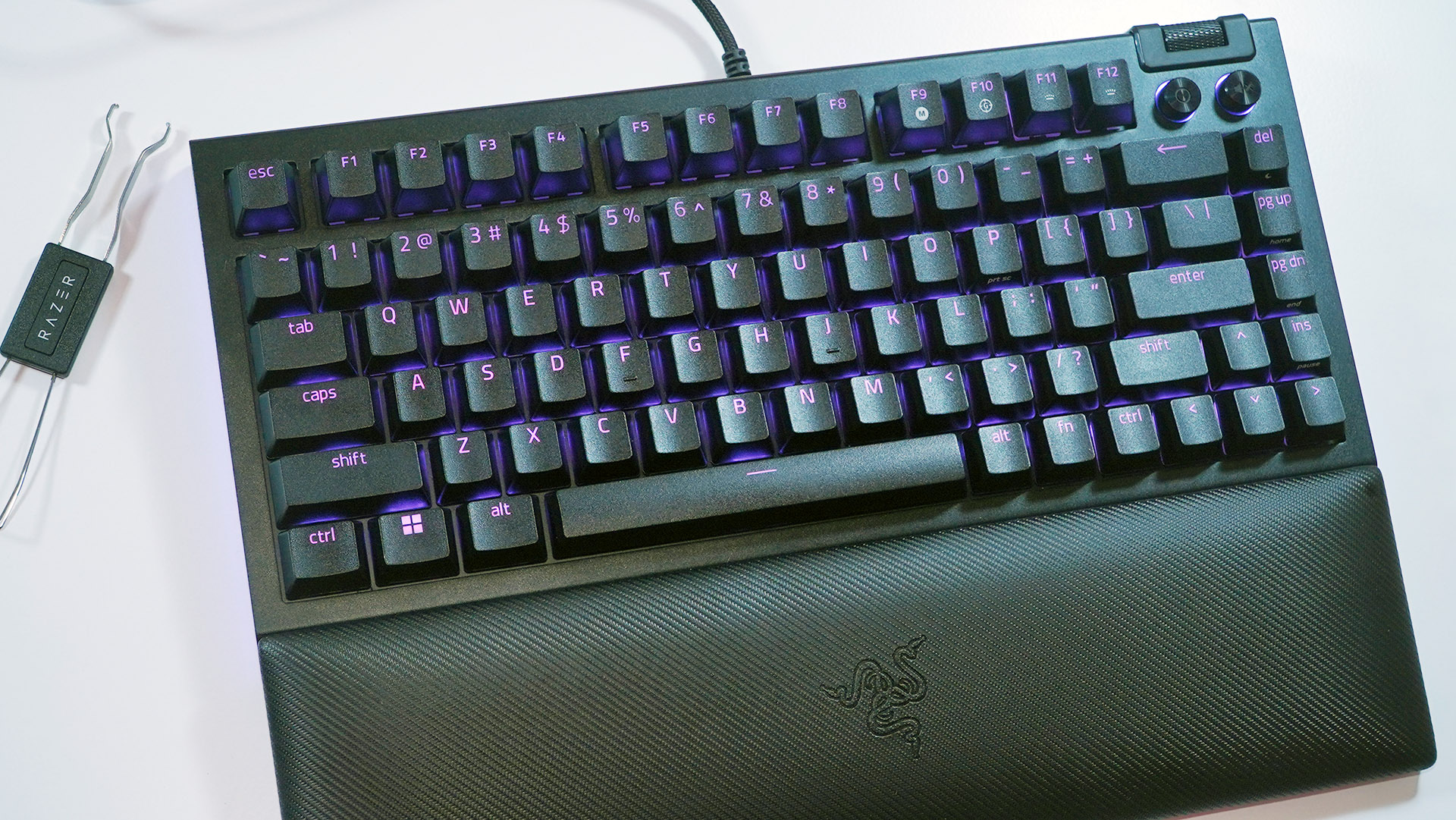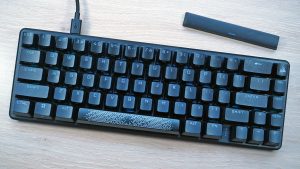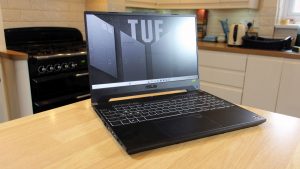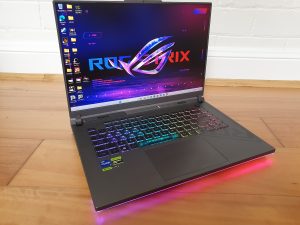

Razer is the stereotypical “player” brand, and at present it sells lots of different keyboards. They’re all well, player keyboards, with a fairly narrow focus on that market. Aside from a brief flirtation with “office” products, the company hasn’t engaged with the custom, store side of the market, exhibited by brands like Keychron, Drop, and Glorious. Previously.
Going by its name alone, the BlackWidow V4 75% is just a slightly shrunken version of the excellent V4 Pro. It’s much more than that. As Razer’s very first keyboard with hot-swap switches, and filled to bursting with top quality parts and functions, it bridges the gap between gamer and customized keyboards.
At a naturally middle-ground style, the V4 75% isn’t ideal. Those wanting a “pure” video gaming experience will most likely have the ability to discover a better deal, and those who desire a more exceptional customized keyboard can get a more targeted alternative for around the same cost. But if you find yourself torn in between gaming keyboards and those that accept a custom feel, it’s a perfect compromise.
What features does the BlackWidow V4 75% have?
Physically, the V4 looks similar to a great deal of 75% keyboards, like the Asus ROG Azoth or the Keychron Q1. It swaps out the more normal dial for a horizontal one, a shortened variation of the one on the right side of the full-sized V4 Pro, slicing down the noticable media controls to just Mute and Play/Pause. Aside from that, it’s a familiar layout (just the best Shift key is reduced) in Razer’s normal jet black.
The keyboard inherited a few other traits from the V4 Pro, consisting of a cushy, comfortable wrist rest that weakly connects to the primary board by means of magnets, and RGB lighting that reaches the left and ideal side in strips (however not the rest). It’s likewise wired, with no cordless alternative, something Razer dropped from the V3 series, and still includes ABS plastic keycaps instead of the more premium PBT.
Razer took a good, long list at the most popular semi-custom keyboards, plus the present trends on keyboard neighborhoods. The result is a laundry list of premium and customized functions.
Hot-swap switch sockets
Aluminum body (top and 2 sides).
Gasket mount.
PCB and body foam.
PCB “tape mod” layer.
FR4 (plastic-style) plate.
Oiled stabilizers.
User-accessible case … sort of.
So yeah, this is a large departure from Razer’s standard style, while keeping the majority of the gamer elements it’s been building up over the last couple of years. The hot-swap option is something that’s a pure plus for basically any person, unless you desire uncommon and exclusive optical switches, as seen on the Huntsman line. The gasket install, internal foam, and “tape mod”– a popular aftermarket addition that Razer has basically industrialized– are all targeted at making the typing “feel” more superior.
The other half is the newly developed “Razer Orange V3” switches that come standard. Razer’s made a big to-do about how much enhancement has actually been made over previous styles, and interestingly, it’s picked tactile switches (small bump, no click) over the totally smooth direct switches present in many video gaming keyboards.
How does it feel to type on the BlackWidow V4 75%?
What has all this work attained in terms of typing and gaming? Speaking as a mechanical keyboard nut, I ‘d state it’s made a board that has a surprisingly good typing experience– and a shockingly great one for a board still quite focused on players. The instant improvement over other Razer boards, even the most costly ones in the line, is immediately obvious.
The aluminum deck combined with the foam and tape mod make the switches rather “thocky,” to use the lingo of the mech pastime. The small bump is obvious, but very smooth thanks to thick, stiff stems. It’s not as deep, resonant, or remarkable as a few of the multi-hundred-dollar builds from store sellers, but it’s a definitely an upper hand on just about any gaming-branded board out there. If it weren’t for the Razer name and marketing, I ‘d state this board is better for typing than for gaming.
Additional reading: See our roundup of the best mechanical keyboards to find out about competing items.
All that being said, it’s got a few points against it versus a more focused “custom” board like the GMMK Pro or the Keychron Q1. That makes it significantly lighter than other 75% boards with all metal bodies.
Second, Razer has actually chosen to stick with its Synapse software rather of the standardized, multiplatform QMK or VIA for shows. It’s understandable– Razer has actually sunk a great deal of resources into Synapse, including cross-platform syncing of the Chroma lighting with such diverse systems as Amazon Alexa and Phillips Hue. And as motorist programs go, Synapse is probably the very best on the market. Perfectionists will still resent having to utilize exclusive software application.
Finally, Razer PR stressed to me that the BlackWidow V4 75% was made to engage with the custom-made pastime crowd, with a body that can be taken apart by removing simply six basic Philips-head screws. And certainly, this is the case. The screw right beneath the USB cable has an obvious service warranty sticker label covering it. A dive into the user manual confirms that, undoubtedly, your guarantee is void if you open the keyboard, even if no further modifications are made. That’s far from the mod-friendly image cultivated by a few of Razer’s rivals in this area, and such an obvious disinclination to additional customization needs to count versus it.
How is the BlackWidow V4 Pro for gaming?
As I said previously, the excellent tactile Orange V3 switches practically make the BlackWidow V4 75% more fit to typing than to gaming. If you want it for the latter– and I have to presume that a lot of Razer lovers do– you won’t discover it lacking.
Just like most of Razer’s recent keyboards, it’s entirely personalized in Synapse, can be loaded with offline profiles in regional memory, and can program macros on the fly. It has 8,000 Hz polling, much more than any human can really utilize, and fast “video game modes” disable the Windows button, Alt-Tab, and Alt-F4. When again there are a few buttons that are off-limits for programming, including Win, Fn, and the play/pause button.
The V4’s super-comfy wrist rest makes extended gaming sessions a breeze, and I believe some players may prefer the smaller sized, backpack-friendly size (not to point out the lighter plastic body) versus the full-sized V4 Pro. And yes, the lighting does look very quite, specifically with the side strips– I’m partial to the “fire” preset that makes it glow like a Christmas fireplace.
How does the BlackWidow V4 Pro compare for worth?
Here’s where things get interesting for the BlackWidow V4 75%. At $190, it’s $40 less than the much larger, much heavier V4 Pro. And considering all the engineering and extra parts that entered into the design, I ‘d state that’s more than fair. How does it compare to comparable keyboards from the competition?
As a wired, gaming-focused 75% board that swings for the “customized” crowd, I ‘d say the Glorious GMMK Pro is the closest model to compare it to. It likewise has side lighting and a great wrist rest, and features an almost similar design and set of features, minus the “tape mod,” but with a custom break-away cable and a complete aluminum body. For these high-ends, Glorious asks $350. Razer’s a clear and significant winner in regards to worth, and depending upon your tastes, its more gaming-focused software and much faster ballot might make it a straight-out winner anyhow.
The V4 75% also takes on the Asus ROG Azoth, that includes wireless capabilities, a complete metal frame, an OLED screen, and a switch lubing set, even if it is rather barebones. I found the screen a bad replacement for a standard dial with really little useful use, and Asus’ video gaming software is abysmal. Razer’s a clear winner unless you can’t live without high-speed wireless.
I reviewed the cordless Pro version of this board, and it remains our leading overall choice for pure mechanical keyboards, however the wired-only board is a more direct match for Razer here. All it’s missing out on in the hardware feature list is Razer’s 8,000 Hz polling, the built-in “tape mod,” and that very cushy wrist rest … but Keychron has selected to make its keyboards programmable with VIA and QMK.
I’m prepared to call this a wash. Those who desire a keyboard for pure gaming expertise and some light custom alternatives will be better with the BlackWidow V4 75%, even with its rather low-rent ABS keycaps and lighter plastic body. Those who wish to go full-scale on the custom side of things will get more bang for their dollar with the Keychron, which is still perfectly serviceable for gaming if not so razor- laser-focused on it.
The BlackWidow V4 75% is a fantastic keyboard, and a huge advance for Razer.
All rambling contrasts aside, the BlackWidow V4 75% is a great keyboard, and a big step forward for Razer. It’s an exceptional choice if you desire terrific video gaming and typing with the choice to dip your toes in the custom-made keyboard trend, or just desire a more premium alternative that maintains Razer’s gaming heritage.








